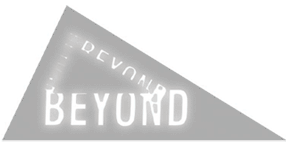
About the Second Guangzhou Triennial
The theme —— BEYOND : an extroardinary space of experimentation for modernization
The curatorial team of the Second Guangzhou Triennial consists of internationally renowned curators Hou Hanru, Hans Ulrich Obrist and the museum’s in-house curator Guo Xiaoyan. They have come up with an extraordinary title for the event: Beyond.
“Beyond” refers to various forms of special cultural and artistic phenomena and methods developed under new social and economic circumstances that are unique, flourishing and full of vitality.These phenomena and methods embody the exciting and complicated imprints of globalization; they represent those specific solutions and patterns created and adopted by China and other non-western countries in their own process of modernization; they are an ever-changing dynamic phenomenon.
“An extraordinary space of experimentation for modernization” takes the Pearl River Delta (PRD) as one of thetypical developing regions to study the contemporary art within the extraordinarymodernization framework that is full of possibilities and confusion. Pearl River Delta (PRD) stands for new space strategies, economic patterns and life styles. We regard this “extraordinary space” as a platform for artistic experimentation and practice. At the same time, this also evokes a unique and inventive experimental sample.
Therefore, the second Guangzhou Triennial focuses on the research and reflection on those “extraordinary” modern developments, and presents the “extraordinary” expression of artists, architects, and scholars. To achieve such a vision, we have established a new structure, the cross-space, cross-time, cross-cultural, and inter-disciplinary Delta Laboratory (D-Lab). It guarantees a platform for sustainable and evolving research, creation and cultural exchanges. Tens of international and Chinese artists, architects and cultural activists have been invited to the PRD area to carry out studies and exchanges, and further realize specific projects for the Triennial exhibition. As the core of the Triennial, “D-Lab” has already held 3 major labs with over 10 public presentations. The related documents will also be edited and published. This strategy emphasizes expansions and continuations in both time and space. It fundamentally subverts conventional exhibition curatorial models and allows the globalised contemporary art activities intimately fused with the local context and deeply influencing its future development. Thurs, this Triennial has become a process of creating new realities for the very locale itself.
Besides D-Lab, The second Guangzhou Triennial also consists of the Main Exhibition, Self Organization, and Special Projects. They will be opened on November 18th2005 inGuangzhou with Guangdong Museum of Art as the main venue. The event will last till Jan. 15th, 2006, while the D-Lab Project will go on at the same time.
The second Guangzhou Triennial An introduction
Curator of the Guangdong Museum of Art,
Wang Huang Sheng
In November 2001, the “first Guangzhou Triennial: Reinterpretation – A decade of experimental Chinese art” was held and had a deep and wide-spread impact in the Chinese cultural world as well as internationally. In regard to the Guangzhou Triennial’s accomplishments and significance, we are not just limited to discussions on the categories of art events or art history, it’s much more likely that we’ll use a practical attitude and a surrealist sentiment to explore the close lateral ties between the events themselves and China’s contemporary society and cultural process, that we will estimate how deep the compositional relation is between the events and cultural history from an “embryology” perspective, we will search for and make a study of the existing possibilities and the real meaning in Chinese society of this type of large scale international modern art exhibition and make an effort to realize the various, highly constructive and surreal cultural visions we have.
Preface for the Second Guangzhou Triennale
by Hans Ulrich Obrist, Milano October 2005
The situation of Biennales and Triennales today is complex. When we try to work out how to deal with this complexity, its important not to reduce
our reflections
to one single model but to study several different ones, historical ones
and also contemporary ones that take an experimental approach to this
complexity. The writer Edouard Glissant
has compared Biennales/Triennales and other large scale exhibitions to
continents (rock solid and imposing) as opposed to the
archipelago (welcoming and sheltering). In Glissant's words, „The idea of a non-linear time [... or the ]coexistence of several time zones would of course allow for a great variety
Hou Hanru
The Guangzhou Triennial is a relative newcomer to the global art scene; such a constellation of spectacles is often manifested regionally and internationally in different biennials and triennials. In other words, the biennial/triennial structure has now become a major form of representation for contemporary art across the world. On the one hand, this is a conscious effort by different local art communities to emancipate a space for more freedom for imagination and expression on the global map, and, on the other hand, the biennale/triennial embodies a desire by the authorities to promote a coherent identity in an increasingly competitive world of cultural production. In many ways, this interesting paradox is an outcome of a collective longing to become a part of the overall process of economic globalisation itself. As evident in the boom of biennials and triennials in China since the 2000 Shanghai Biennial which propels China’s efforts to integrate itself into the “global’, these inseparable but contradictory aspects, as a shared motivation, have been affecting the very foundations of such events from the onset.
Guangdong Museum of Art
Guo Xiaoyan
The word “Beyond” being used in The Second Guangzhou Triennial such an noticeable exhibition has extended the creative and inspiring exhibition mode established by Hou Hanru and Hans Ulrich Obrist, City in Motion, that have become an exciting journey of visual art revolution as it went to seven most representative cities in international context around the world in two years, yet it properly connects a local art event with the world, therefore, art has gone beyond the geographical boundary and become a focus.
| Copyright © 2004-2006 GDMoA.org. All rights reserved | Website design : Alternative Archive |